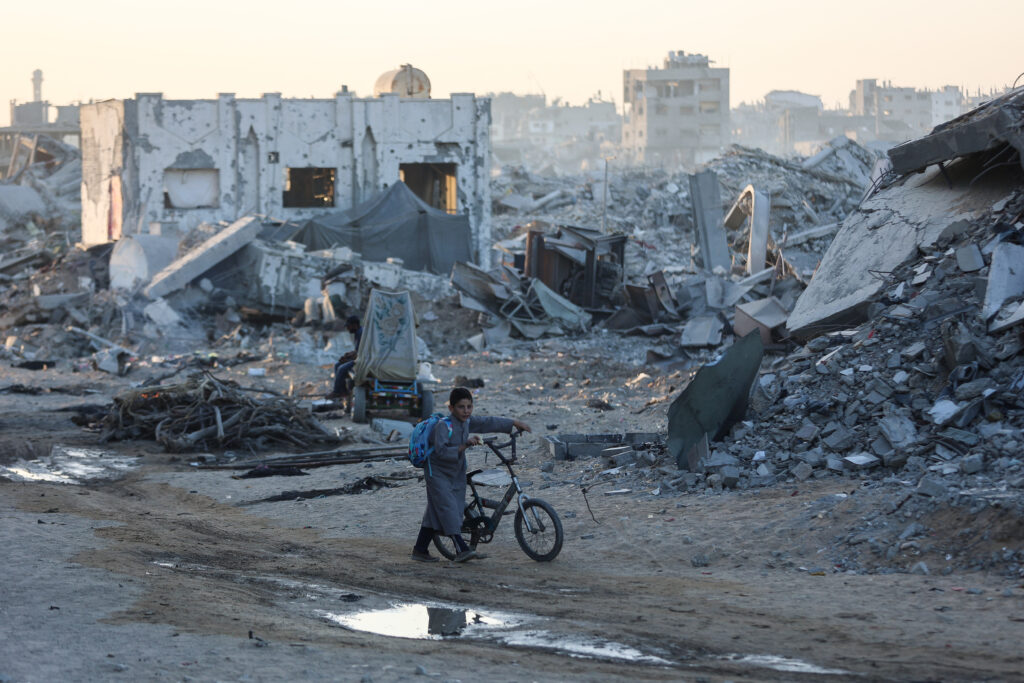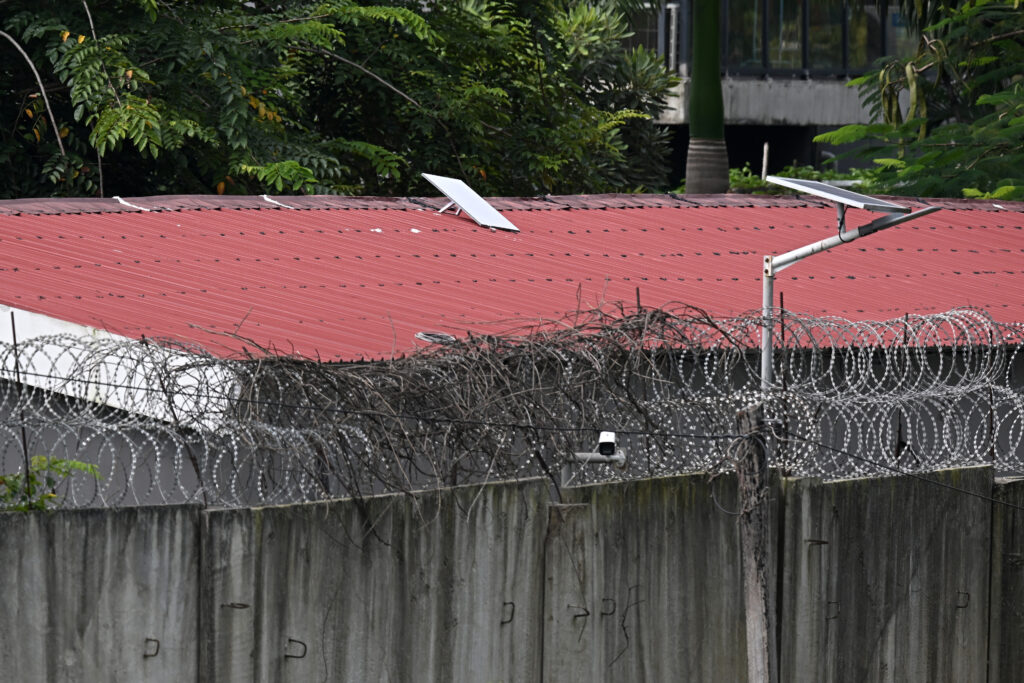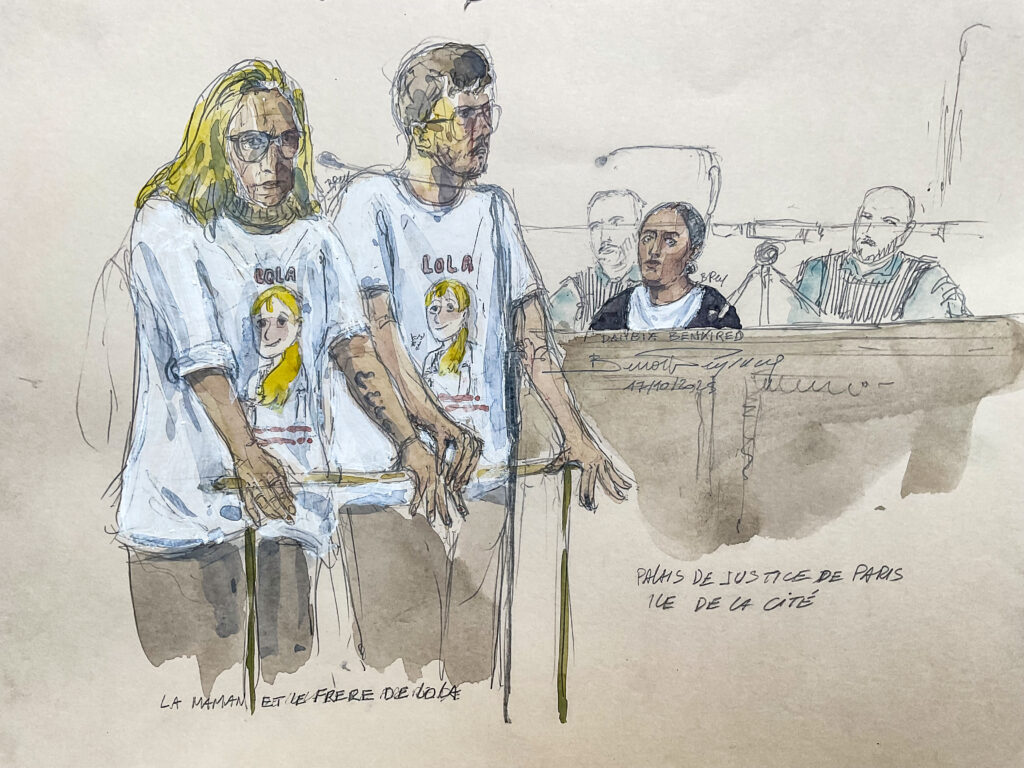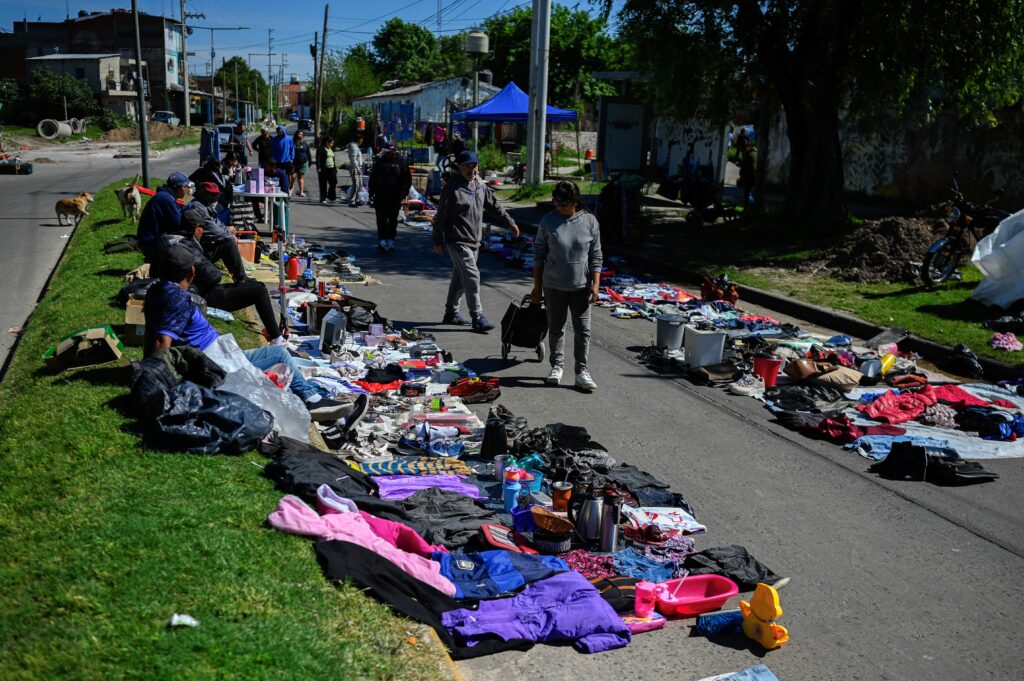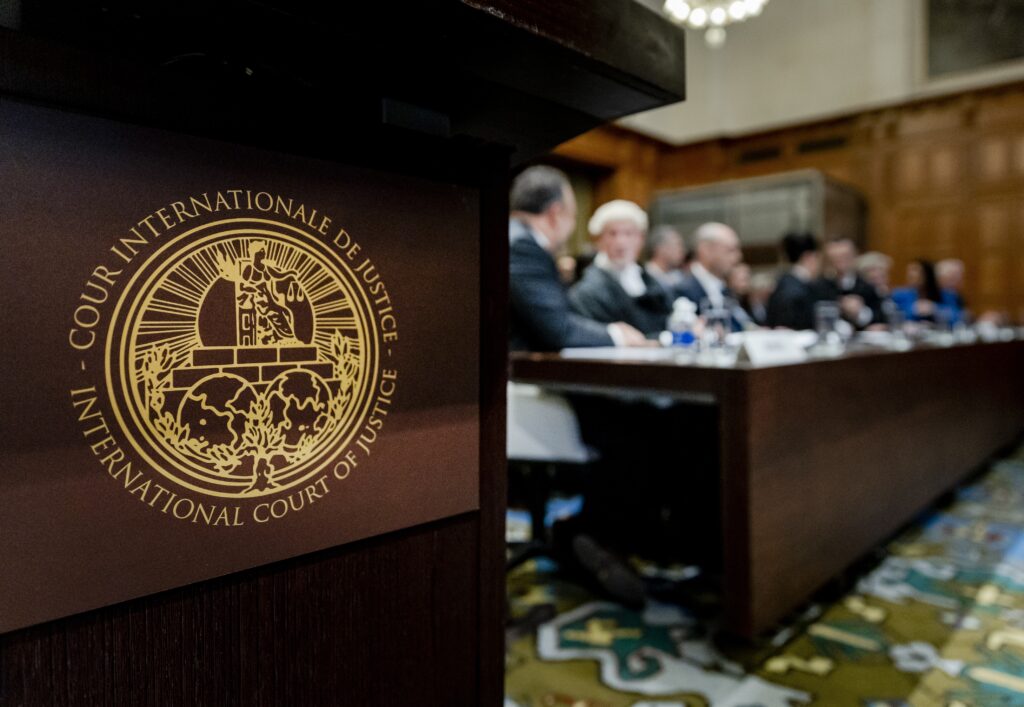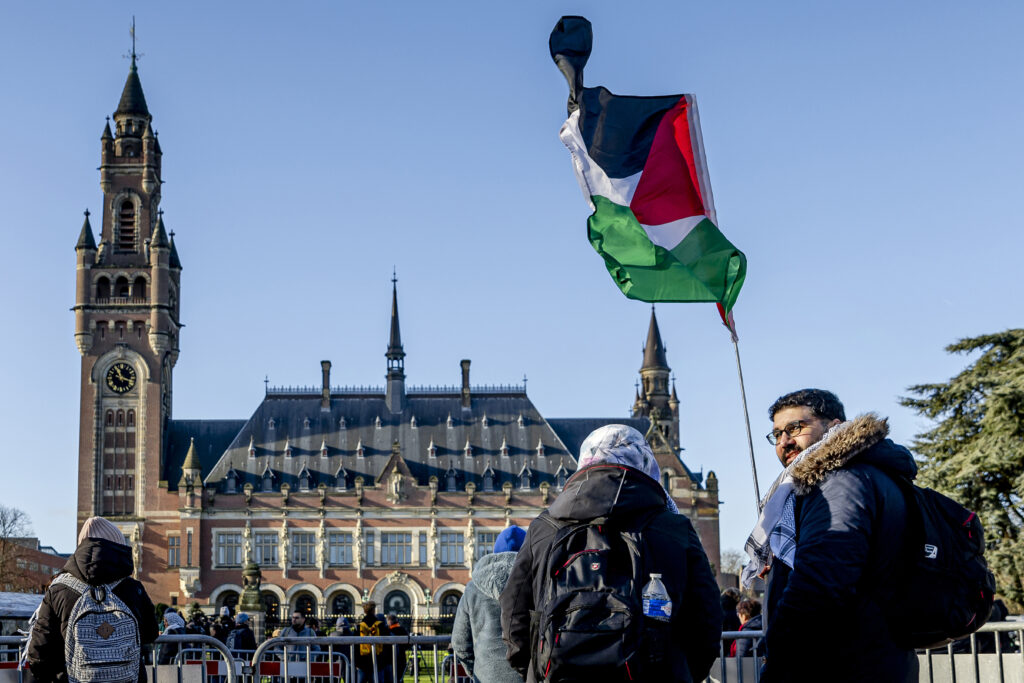US pushes plan to disarm Hamas and rebuild Gaza
Vice President JD Vance warned Wednesday that the United States and allies face a tough task disarming Hamas and building a peaceful future for Gaza, as Washington sought to reassure Israel over the next steps in its ambitious ceasefire deal.Vance met Prime Minister Benjamin Netanyahu on the second day of a trip to Israel, part of a diplomatic blitz in support of the US-brokered plan to end the fighting, recover hostages and, eventually, rebuild the devastated Palestinian territory.”We have a very, very tough task ahead of us, which is to disarm Hamas but rebuild Gaza, to make life better for the people of Gaza, but also to ensure that Hamas is no longer a threat to our friends in Israel,” Vance said.Washington’s top diplomat, Secretary of State Marco Rubio, is due in Israel on Thursday and will meet Netanyahu on Friday, an Israeli government spokeswoman said. Vance had kicked off the three-day visit on Tuesday by opening the Civil-Military Coordination Centre (CMCC) in southwest Israel, where US and allied troops will work with Israeli forces to monitor the truce and oversee aid to Gaza. – Turkish troops? -“A lot of our Israeli friends (are) working together with a lot of Americans to actually mediate this entire ceasefire process, to get some of the critical infrastructure off the ground,” Vance said, after talks with Netanyahu in Jerusalem.Vance pointed to the “international security force” as one of the bodies that would have to be set up. Under US President Donald Trump’s 20-point plan, this military mission would keep the peace in Gaza as Israel withdraws.Several US allies are considering joining the force, but no US troops would be on the ground inside Gaza, instead coordinating from the CMCC in Kiryat Gat, Israel.Reports that Israel’s outspoken critic and regional rival Turkey could provide troops have rattled Israeli opinion.Netanyahu said decisions on the new security force would be made in discussion with the United States, but on Turkey’s role he said: “I have very strong opinions about that. You want to guess what they are?” – ‘Great optimism’ -Despite an eruption of violence on Sunday, when two soldiers were killed and Israel responded with a deadly wave of air strikes, Vance expressed “great optimism” that the ceasefire would hold and the plan to end the war proceed.The Israeli leader, who has been criticised by some domestic opponents for accepting the US-backed ceasefire before Hamas was fully destroyed, defended the deal. “We’ve been able to do two things. Put the knife up to Hamas’s throat. That was the military effort guided by Israel,” he said.”And the other effort was to isolate Hamas and the Arab and Muslim world, which I think the president (Trump) did brilliantly with his team. So those two things produced the hostages,” Netanyahu said.Vance also championed the Gaza deal’s role as a “critical piece in unlocking the Abraham Accords” — a Trump administration plan to normalise relations between Israel and the Arab world.Israel responded to its soldiers’ deaths on Sunday with an intense wave of bombings that the Hamas-run territory’s health ministry said killed 45 Palestinians. Hamas denied having any role in the killings.Despite the violence, Hamas has continued to hand over the remains of deceased hostages in small numbers as part of the ceasefire deal, and Palestinians have welcomed the truce, their cities lying in ruins.Displaced civilian Imran Skeik, 34, living in a tent in Al-Saraya Square in the Al-Rimal neighbourhood in Gaza City, told AFP: “The situation is much better — the war has stopped, and there are no sounds of bombs and shelling like before. “We hope the ceasefire continues and that Israel and Hamas both stick to it. We’ve started to get some rest, but there are still many problems. Will we have to stay in tents — another kind of suffering?” – Hostage remains -The Israeli military said Wednesday the remains of two more hostages returned the day before had been identified as Aryeh Zalmanovich and Master Sergeant Tamir Adar.Zalmanovich, 85 at the time of his death, was abducted from his home in kibbutz Nir Oz and killed in captivity on November 17, 2023, the military said. The soldier Adar, 38 when he died, was killed while fighting to defend Nir Oz on October 7, 2023 and his body taken to Gaza, it said. The militants have now released 15 of the 28 hostage bodies pledged to be returned under the deal, but Hamas has said the search is hampered by the level of destruction in the territory.For each deceased Israeli hostage released, Israel returns 15 dead Palestinians. On Wednesday, it sent back 30 more, bringing the total since the ceasefire to 195, the Gaza health ministry said. The war, triggered by Hamas’s October 7, 2023 attack on Israel, has killed at least 68,229 people in Gaza, according to the health ministry in the Hamas-run territory, figures the UN considers credible.Hamas’s 2023 attack resulted in the deaths of 1,221 people, mostly civilians, according to an AFP tally based on official Israeli figures.
SpaceX cuts off 2,500 Starlink devices at Myanmar scam centres
SpaceX has cut service to more than 2,500 Starlink internet devices at Myanmar scam centres, a company executive said Wednesday, after AFP revealed that their use had exploded in the illicit industry.Sprawling compounds where internet tricksters target foreigners with romance and business cons have thrived along Myanmar’s loosely governed border during its civil war, sparked by a 2021 coup.A highly publicised crackdown starting in February saw around 7,000 workers repatriated and Thailand enact a cross-border internet blockade.But an AFP investigation this month revealed construction has continued apace, while Starlink receivers have been installed en masse, seeming to connect the hubs to the Elon Musk-owned satellite internet network.SpaceX’s vice-president of Starlink business operations, Lauren Dreyer, said the company “disabled over 2,500 Starlink Kits in the vicinity of suspected ‘scam centers'” in Myanmar.Her post on X did not say when the terminals were disconnected. The online scam industry has boomed across Southeast Asia, conning victims out of up to $37 billion in 2023, according to a United Nations Office on Drugs and Crime report.Cambodia deported 64 South Koreans last week accused of links to scam networks, with police seeking arrest warrants for most on their return.Thailand’s deputy finance minister Vorapak Tanyawong resigned on Wednesday following allegations linking him to Cambodia-based cyberscam networks.Myanmar’s border regions with Thailand and China have become particularly fertile ground for the fraud factories where some workers are lured or trafficked, while others go willingly.Starlink did not have enough traffic to register as one of the country’s internet providers before February, but ranked top every day from July 3 until October 1, according to the Asian regional internet registry, APNIC.The powerful US Congress Joint Economic Committee says it has begun an investigation into Starlink’s involvement with the centres.- ‘Leaving in chaos’ -Myanmar’s junta said this week it had raided KK Park — one of the country’s most notorious scam centres — and seized Starlink terminals.People there said raids were continuing on Wednesday, and an AFP reporter saw more than 1,000 people travelling north away from the site by foot, on motorbikes and crammed into pickup trucks.”Around 10:00 am Myanmar military soldiers in four trucks arrived to our site,” said one employee leaving KK Park, who declined to give his name for security reasons.”Workers are leaving in chaos,” he added.Experts say Myanmar’s military turns a blind eye to scam centres which profit its militia allies in the region who are crucial in the civil war.But the junta has also faced pressure to shut down the scam operations from its military backer China, irked at the number of its citizens both participating in and being targeted by the scams.The haul of Starlink terminals the junta said it seized this week numbered only 30, a fraction of the thousands which independent analysts have documented at KK Park.Nathan Ruser, an analyst at the Australian Strategic Policy Institute, said the Myanmar military is attempting a “balancing act” to please both China and the militias aligned with the junta — “tokenistically” taking action “while actually not doing anything”.But as night fell on Wednesday, a resident of Mae Sot, just over the border in Thailand, said KK Park appeared largely abandoned.”Usually at this time in the evening it is lit up brightly,” they told AFP, speaking anonymously for security reasons.”Today I only see some lights,” they added. “I don’t see the lights on in the dormitory buildings.”Erin West, a longtime US cybercrime prosecutor who resigned last year to campaign full-time against scam centres, said its closure would be “a drop in the ocean”.”If there is a crackdown at KK Park, this is a small portion of what’s happening at KK Park,” she told AFP. “And KK Park is a small portion of the number of compounds in the world that are doing this dirty business.”
Meurtre de Lola: sa mère, en pleurs, demande que l’accusée “soit enfermée toute sa vie”
La mère de Lola Daviet, violée, torturée et tuée à l’âge de 12 ans, a demandé mercredi à la cour d’assises de Paris “de faire le nécessaire” pour que l’accusée, Dahbia Benkired, “soit enfermée toute sa vie”.En pleurs, Delphine Daviet a lu une lettre pour décrire l’enfant, tuée le 14 octobre 2022.”Lola était une jeune fille joyeuse, sociale, aimante, heureuse de vivre, toujours prête à aider son prochain”, a-t-elle entamé, se rappelant “une vie de famille très simple, très à l’écoute les uns des autres”.”Avec mon mari, nous avons toujours éduqué nos enfants avec le sens du partage, du respect envers les autres, et en même temps, on leur faisait de la prévention sur le danger des inconnus. On leur disait: +si on vous agresse, n’hésitez pas à crier, on vous entendra+”.Delphine Daviet raconte “le jour du drame” : “Lola est repartie en me disant +à tout à l’heure, bisous+”. “Qui aurait pu imaginer que Lola (croiserait) cette chose, ce monstre ? Moi, je préparais les bagages pour le mobile home, comme tous les vendredis”, relate-t-elle. Le couple de gardiens d’immeuble dans le XIXe arrondissement de Paris – c’est dans l’un des appartements que la fillette a été tuée – avait pour habitude de retrouver son Pas-de-Calais natal tous les week-ends.Dahbia Benkired, qui vivait chez sa soeur, avait d’abord expliqué son geste par un excès de colère après que Delphine Daviet lui avait refusé un badge pour emprunter l’ascenseur.”Cette histoire de badge, dont je n’ai pas souvenance… Que des histoires… Rien ne mérite d’avoir autant de haine, de mépris, d’acharnement envers ma Lola”, a insisté la mère de l’enfant.”Je finis par comprendre avec ma psychologue que ce n’est pas nous les coupables, c’est cette chose, le diable. Lola n’aurait jamais fait de mal à qui que ce soit. Je me demanderai toujours pourquoi Lola l’a suivie”, poursuit-elle, en rappelant que son mari, le père de Lola, est mort quelques mois plus tard après avoir repris la boisson.”Mais cette chose ne nous enlèvera pas l’amour de notre famille”, reprend Delphine Daviet. “Pour tout cela, je demande à la justice de faire le nécessaire pour que cette chose soit enfermée toute sa vie. Ne demandez pas autre chose que la perpétuité”.Dans son box, l’accusée la fixe, impassible, égale à elle-même depuis l’ouverture des débats vendredi dernier.Mais, pour la première fois en quatre jours d’audience, lorsque des photos de la victime de son vivant sont diffusées sur les écrans, Dahbia Benkired baisse les yeux.
Pour les Argentins endettés, acheter, revendre: objectif boucler le mois
Dans des déballages de rue toujours plus vastes, sur les réseaux sociaux, à leurs voisins, ils vendent, achètent, revendent. Pour générer une mini-marge, tenir jusqu’à la fin de mois. Dans l’Argentine de Javier Milei à la veille de législatives, austérité et endettement intensifient les stratégies de résilience.Sur 20 pâtés de maisons, presque deux kilomètres, s’étire la “feria” de Villa Fiorito, faubourg populaire du grand Buenos Aires. Foire informelle, où dimanche s’entassent sur des couvertures à même le sol, des inventaires improbables: de vieux bacs à glaçons, un thermos sans bouchon, un pantalon, des revues, de l’électroménager délabré, des produits vaisselle… Tout est bon, explique une de ces “manteras” (de “manta”, couverture), Gladys Gutierrez, 46 ans, qui étale produits de toilette, savons, lotions, vêtements… Et raconte le jonglage permanent aux petites affaires, à même la foire, sous le regard de Diego Maradona, l’idole née dans le quartier et dont les fresques recouvrent les murs.”Si je vois quelque chose bon marché, je l’achète et je le revends, et la plupart des voisins font pareil. Ils achètent, revendent, ainsi de suite, pour gagner un sou de plus”.Martin Gonzalez, “cartonero”, ramasseur-récupérateur, dit aller régulièrement à la capitale aux riches poubelles, à 20 kilomètres, “pour récupérer des choses, qu’on ramène ici et qu’on revend, pour le quotidien”.- Endettement record -Parfois “ça suffit pour le repas de midi, après il faut repartir chercher”, explique-t-il devant son stand éclectique: un tuyau, des carafes, un débouche-évier, des casques de chantier..”Les gens sont fatigués, en colère”, gémit Gladys Gutierrez. Dont le mari, maçon qualifié, est sans travail “depuis un bon moment”.Plus de 200.000 emplois, entre public et privé, ont été perdus au cours des deux ans d’austérité budgétaire du président, l’ultralibéral Javier Milei, avec le secteur de la construction en première ligne, via le gel de chantiers publics.Ces pertes d’emploi, une activité économique anémiée, ont empêché une majorité d’Argentins de ressentir les bienfaits d’une inflation maîtrisée. A fortiori dans un pays où plus de 40% l’emploi est informel. Comme en grande partie ici, à Villa Fiorito, Selon un rapport de la Banque centrale, le taux de défaillance financière des ménages a augmenté en août pour le dixième mois consécutif, pour atteindre 6,6% du total des crédits, record depuis la création de cet indice en 2008.Ici, “des gens s’endettent pour manger, dans le meilleur des cas s’endettent pour monter un petit négoce, mais à des taux exorbitants”, explique Matias Mora, politologue lui-même originaire de Villa Fiorito. Où peu ont accès au crédit, donc dépendent de prêteurs informels, appliquant des intérêts jusqu’à 40%, 50%.- Ecosystème de survie -Javier Milei se targue d’avoir fait baisser la pauvreté en 12 mois, en partie grâce à l’inflation jugulée, et un effort soutenu sur les allocations aux plus pauvres. Mais à Fiorito, fief péroniste (opposition de centre-gauche), il n’a guère à attendre des législatives de mi-mandat dimanche: en 2023 à la présidentielle, il y avait obtenu un pâle 27% (55,7% au niveau national). Néanmoins, l’endettement, le pluri-emplois contraint, les ventes informelles, n’ont nullement commencé avec le gouvernement Milei, souligne M. Mora. Par contre, avec lui, ils se sont “approfondis et aggravés”.Selon une étude en mai du cabinet privé IETSE, 91% des ménages argentins étaient endettés: des dettes contractées, à plus de 85%, en 2024 ou 2025. “Cela me rappelle beaucoup 2001”, dit Juana Sena, 71 ans, en référence aux heures de la grande crise financière de 2001, qui mena à une explosion sociale (39 morts): “Aux coins de rue, on voit sur des tables des gens vendre des pâtisseries ou pains faits maison, on voit des vêtements à vendre, exposés aux fenêtres”.En plus de ces ventes de rue, relève Matias Mora, se développe tout un monde de “manteros numériques”, où des milliers de participants, répartis par zones, vendent une poussette, un meuble, un plat maison… Dans l’urgence, le plus souvent. “A ce prix-là, parce que j’ai besoin de l’argent aujourd’hui. Merci d’écrire en privé”, indiquait une annonce cette semaine.”C’est un nouvel écosystème (…) une logique de survie”, estime M. Mora. “Les gens se débrouillent” et font preuve d’ingéniosité pour joindre les deux bouts, mais “au détriment de la santé mentale, de la santé physique, en s’épuisant”.
Aide humanitaire à Gaza: la CIJ va rendre son avis sur les obligations d’Israël
La plus haute juridiction de l’ONU a ouvert mercredi l’audience lors de laquelle elle doit rendre son avis sur les obligations d’Israël envers les organismes fournissant une aide humanitaire aux Palestiniens de Gaza.Le président de la CIJ, Yuji Iwasawa, a ouvert l’audience publique pour rendre cet avis consultatif concernant l’obligation d’Israël de faciliter l’aide à Gaza.L’ONU a demandé à la cour de La Haye de clarifier les obligations d’Israël, en tant que puissance occupante, envers les Nations unies et d’autres organismes, “y compris s’agissant d’assurer et de faciliter la fourniture sans entrave d’articles de première nécessité essentiels à la survie” des Palestiniens.Un avis de la CIJ n’est pas juridiquement contraignant, mais la cour estime qu’elle a “un grand poids juridique et une grande autorité morale”.En avril, les juges ont entendu pendant une semaine des témoignages de dizaines de pays et d’organisations, dont une grande partie concernait le statut de l’UNRWA, l’agence des Nations Unies pour les réfugiés palestiniens.Israël n’a pas participé aux audiences. Son ministre des Affaires étrangères, Gideon Saar, les a qualifiées de “partie intégrante d’une persécution et d’une délégitimation systématiques d’Israël”.Israël a interdit à l’UNRWA d’opérer sur son sol après avoir accusé certains de ses employés de participation à l’attaque du Hamas du 7 octobre 2023, qui a déclenché la guerre.Plusieur enquêtes, dont une menée par l’ancienne ministre française des Affaires étrangères Catherine Colonna, a révélé des “problèmes de neutralité” à l’UNRWA.Cependant, ce rapport d’avril 2024 indiquait qu’Israël n’avait “pas encore fourni de preuves” à l’appui de ses allégations selon lesquelles “un nombre important d’employés de l’UNRWA sont membres d’organisations terroristes”.Lors d’audiences devant la cour de La Haye, un responsable américain a exprimé de “sérieuses inquiétudes” quant à l’impartialité de l’UNRWA et a allégué que le Hamas utilisait des installations de l’agence.Le responsable américain, Josh Simmons, a déclaré qu’Israël n’avait “aucune obligation d’autoriser spécifiquement l’UNRWA à fournir une aide humanitaire”.Le responsable palestinien Ammar Hijazi a dit aux juges de la CIJ qu’Israël bloquait l’aide, la considérant comme une “arme de guerre”, provoquant ainsi la famine à Gaza.- “Bouée de sauvetage” -Le directeur général de l’UNRWA, Philippe Lazzarini, a décrit son organisation comme une “bouée de sauvetage” pour les près de six millions de réfugiés palestiniens.L’agence compte encore quelque 12.000 employés à Gaza et entend jouer un rôle majeur dans sa reconstruction après le fragile cessez-le-feu conclu plus tôt ce mois-ci.Plus de 370 employés de l’UNRWA ont été tués depuis le début de la guerre, selon l’agence.Mardi, Abeer Etefa, porte-parole du Programme alimentaire mondial (PAM) des Nations unies, a indiqué que 530 camions de l’organisation étaient entrés dans Gaza depuis la prise d’effet du cessez-le-feu.Ces camions ont apporté plus de 6.700 tonnes de nourriture, ce qui, selon elle, “suffit pour nourrir près d’un demi-million de personnes pendant deux semaines”.Israël fait face à plusieurs procédures en droit international concernant ses opérations à Gaza.En juillet 2024, la CIJ a rendu un autre avis consultatif estimant que l’occupation israélienne des territoires palestiniens était “illégale” et devait cesser au plus vite.La cour examine également une affaire portée par l’Afrique du Sud, qui accuse Israël de violation de la Convention des Nations unies sur le génocide de 1948.Une autre juridiction de La Haye, la Cour pénale internationale, a émis des mandats d’arrêt contre le Premier ministre israélien Benjamin Netanyahu pour crimes de guerre et crimes contre l’humanité présumés.Elle a aussi émis un mandat d’arrêt contre le commandant du Hamas Mohammed Deif, qui, selon Israël, a été tué lors d’une frappe aérienne.
Top UN court starts ruling on Israel’s Gaza aid obligations
The top United Nations court Wednesday began its ruling on Israel’s obligations towards agencies providing humanitarian assistance to Palestinians in Gaza, as aid groups scramble to scale up assistance following a ceasefire.International Court of Justice President Yuji Iwasawa opened the public hearing to deliver its “advisory opinion” laying out Israel’s duty to facilitate aid in Gaza.The UN asked the ICJ to clarify Israel’s obligations, as an occupying power, towards UN and other bodies “including to ensure and facilitate the unhindered provision of urgently needed supplies essential to the survival” of Palestinians.An ICJ opinion is not legally binding but the court believes it carries “great legal weight and moral authority”.ICJ judges heard a week of evidence in April from dozens of nations and organisations, much of which revolved around the status of UNRWA, the UN agency for Palestinian refugees.Israel did not take part in the hearings but an official told journalists earlier Wednesday it was “an abuse of international law”.The official added that Israel “cooperates with international organisations, with other UN agencies regarding Gaza. But Israel will not cooperate with UNRWA.”Israel banned UNRWA from operating on Israeli soil after accusing some of its staff of taking part in the October 7, 2023, Hamas attack that sparked the war.A series of investigations, including one led by France’s former foreign minister Catherine Colonna, found some “neutrality-related issues” at UNRWA.However, the April 2024 report said Israel had “yet to provide supporting evidence” of its allegation that “a significant number of UNRWA employees are members of terrorist organisations”.At the ICJ hearings in April, a US official raised “serious concerns” about the impartiality of UNRWA, and alleged that Hamas used the agency’s facilities.The US official, Josh Simmons, said Israel had “no obligation to permit UNRWA specifically to provide humanitarian assistance”.Simmons added that UNRWA was not the only option for delivering aid into Gaza.Palestinian official Ammar Hijazi told the ICJ judges that Israel was blocking aid as a “weapon of war”, sparking starvation in Gaza.- Aid ‘lifeline’ -UNRWA chief Philippe Lazzarini has described his organisation as a “lifeline” for the nearly six million Palestinian refugees under its charge.The agency still has some 12,000 staff in Gaza and aims to play a major part in its reconstruction after the fragile ceasefire agreed earlier this month.More than 370 of UNRWA workers have been killed since the start of the war, according to the agency.On the eve of the ICJ ruling, Abeer Etefa, Middle East spokeswoman for the UN’s World Food Programme (WFP), said 530 of the organisation’s trucks had crossed into Gaza since the ceasefire.Those trucks had delivered more than 6,700 tonnes of food, which she said was “enough for close to half a million people for two weeks”.Etefa said around 750 tonnes a day were now coming through, which, although more than before the ceasefire, remains well below WFP’s target of around 2,000 tonnes daily.Israel faces several cases under international law over its campaign in Gaza. In July 2024, the ICJ issued another advisory opinion stating that Israel’s occupation of the Palestinian territories was “unlawful” and must end as soon as possible.ICJ judges are also weighing accusations, brought by South Africa, that Israel has broken the 1948 UN Genocide Convention with its actions in Gaza.Another court in The Hague, the International Criminal Court, has issued arrest warrants for Israel’s Prime Minister Benjamin Netanyahu for alleged war crimes and crimes against humanity. It also issued a warrant for Hamas commander Mohammed Deif, who Israel says was killed in an airstrike.

